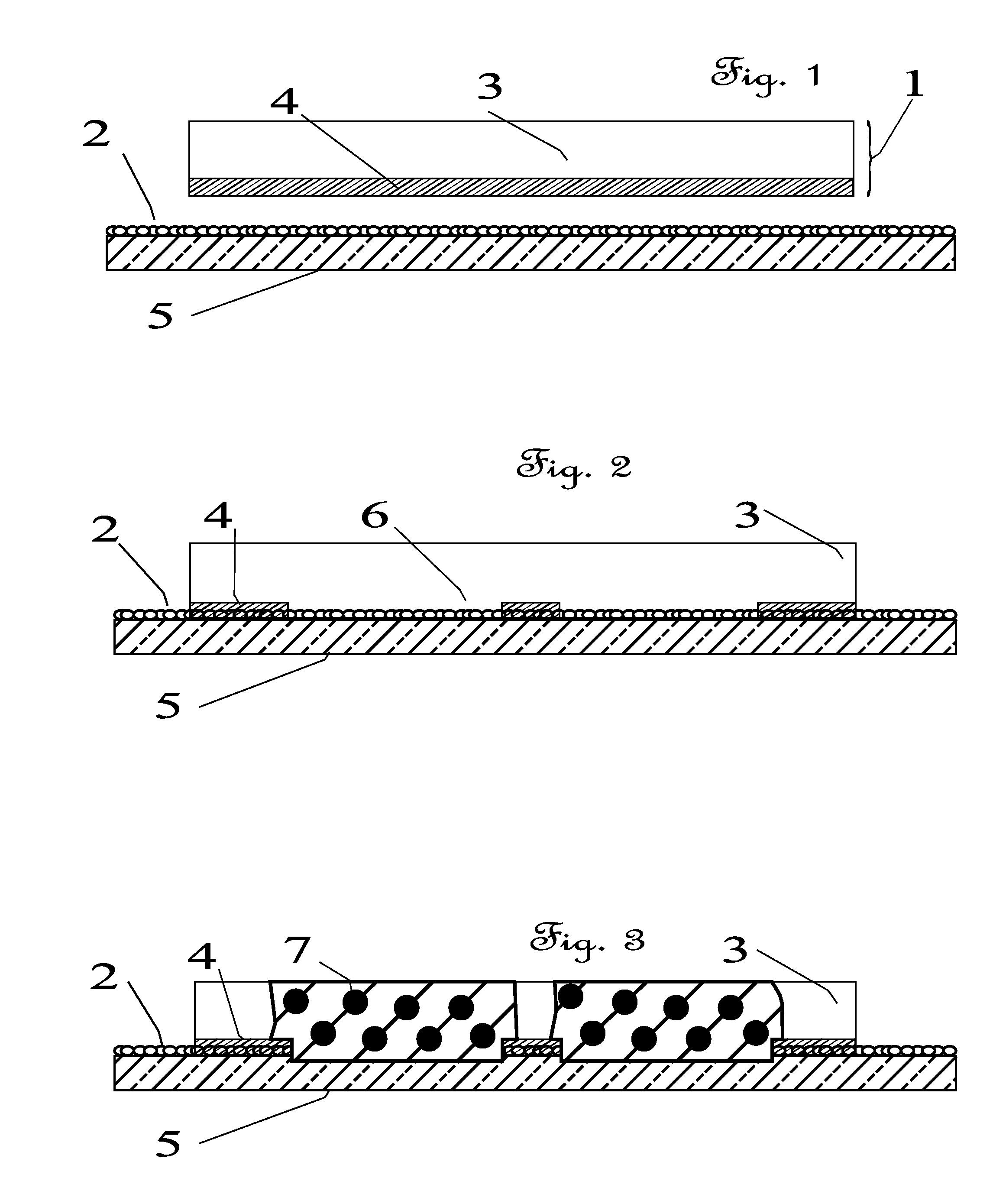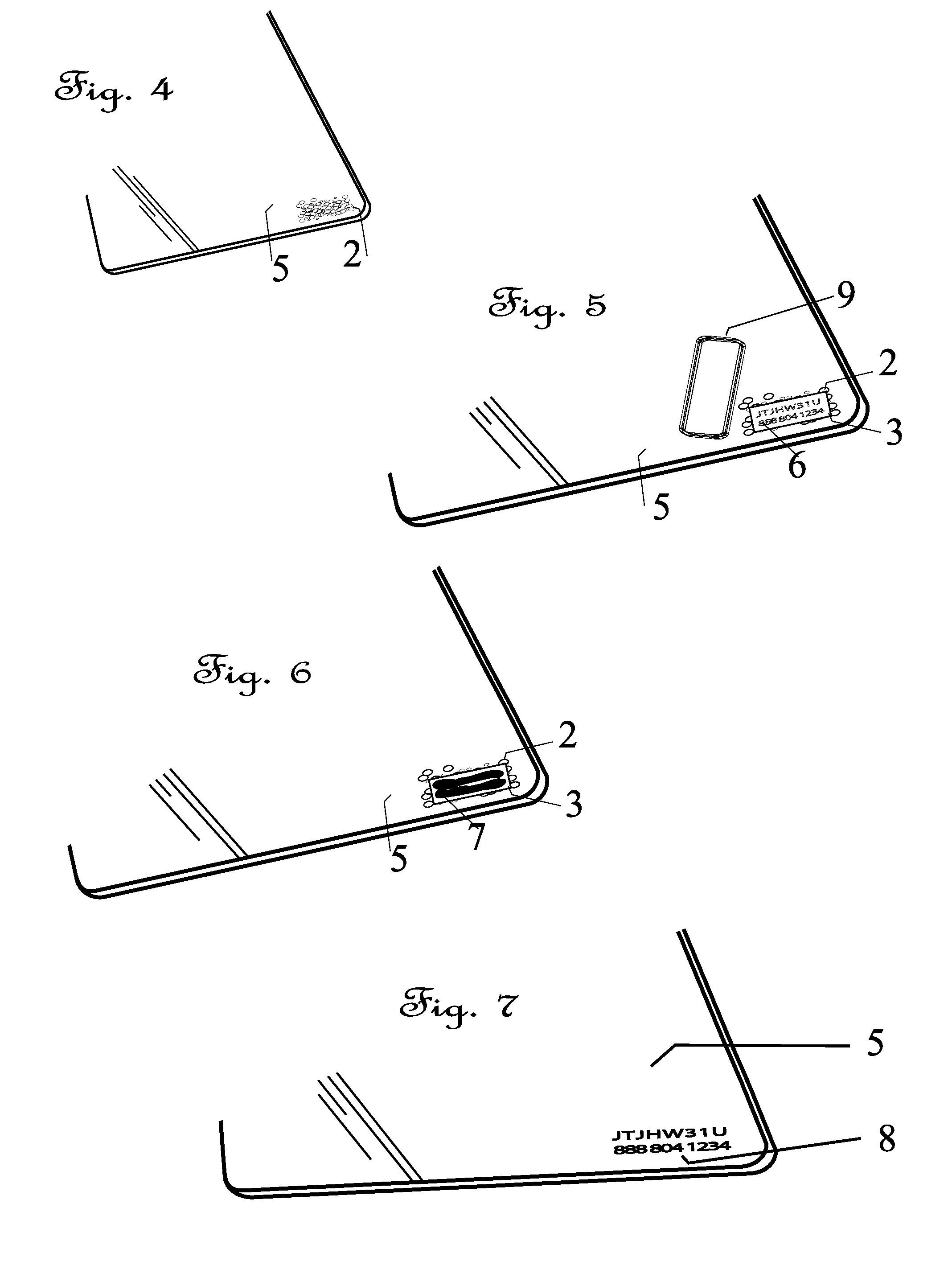Process to attach thermal stencils to a glass substrate and permanently etch a mark therein
a technology of thermal stencils and glass substrates, which is applied in the direction of paper/cardboard containers, manufacturing tools, instruments, etc., can solve the problems of glass cracking by an unskilled hand, high labor intensity, and extremely tedious, and achieve the effect of high resolution
- Summary
- Abstract
- Description
- Claims
- Application Information
AI Technical Summary
Benefits of technology
Problems solved by technology
Method used
Image
Examples
example 1
[0019]Preparation of an adhesive aqueous solution.
[0020]100 grams of raw polyvinyl alcohol (PVA) beads are mixed with 1.75 liters of hot water and agitated until the mixture is homogenized. This is let to cool. To this mixture 1.75 liters of denatured alcohol is mixed to form an adhesive aqueous solution.
[0021]Preparation of a glass etching compound.
[0022]To 1 gallon of boiling water, 250 grams of sucrose is added. Next 750 grams of ammonium biflouride flakes are added and agitated to make a consistent mixture that has a thick paste like viscosity which will not run when applied to vertical or curved surfaces.
[0023]Preparation of the bi-layer stencil mask.
[0024]A bilayer thermal stencil media roll is loaded into a wireless networked direct thermal printer situated so the non-permeable to glass etchant, thermoplastic resin film resist layer of the stencil roll is in direct contact with the thermal print head. An image to be etched is designed and imputed by means of a wireless mobile...
example 2
[0027]Preparation of an adhesive aqueous solution.
[0028]8 U.S. tablespoons of high fructose corn syrup are added and mixed to 1.75 liters of ethanol and 1.75 liters of distilled water.
[0029]Preparation of a glass etching compound.
[0030]For this example, an ammonium biflouride solution prepackaged under the brand “Vari-Etch” cream and manufactured by His Glassworks from Asheville N.C., USA will be used.
[0031]Preparation of the bi-layer stencil mask.
[0032]A bilayer thermal stencil media preloaded into a 1″ wide cassette cartridge as described in U.S. Pat. No. 5,771,803, is loaded into a compatible handheld thermal printer sold under the part number “P-Touch 1650” label maker from the Brother International brand and is situated so the non-permeable to glass etchant, thermoplastic resin film resist layer of the stencil paper is in direct contact with the integrated thermal print head. A vehicle identification number, or VIN, to be etched is imputed by means of the integrated thermal pri...
PUM
| Property | Measurement | Unit |
|---|---|---|
| Length | aaaaa | aaaaa |
| Time | aaaaa | aaaaa |
| Adhesion strength | aaaaa | aaaaa |
Abstract
Description
Claims
Application Information
 Login to View More
Login to View More - R&D
- Intellectual Property
- Life Sciences
- Materials
- Tech Scout
- Unparalleled Data Quality
- Higher Quality Content
- 60% Fewer Hallucinations
Browse by: Latest US Patents, China's latest patents, Technical Efficacy Thesaurus, Application Domain, Technology Topic, Popular Technical Reports.
© 2025 PatSnap. All rights reserved.Legal|Privacy policy|Modern Slavery Act Transparency Statement|Sitemap|About US| Contact US: help@patsnap.com



